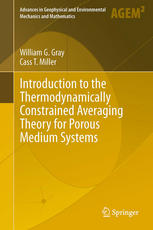

Most ebook files are in PDF format, so you can easily read them using various software such as Foxit Reader or directly on the Google Chrome browser.
Some ebook files are released by publishers in other formats such as .awz, .mobi, .epub, .fb2, etc. You may need to install specific software to read these formats on mobile/PC, such as Calibre.
Please read the tutorial at this link: https://ebookbell.com/faq
We offer FREE conversion to the popular formats you request; however, this may take some time. Therefore, right after payment, please email us, and we will try to provide the service as quickly as possible.
For some exceptional file formats or broken links (if any), please refrain from opening any disputes. Instead, email us first, and we will try to assist within a maximum of 6 hours.
EbookBell Team

4.4
32 reviewsThermodynamically constrained averaging theory provides a consistent method for upscaling conservation and thermodynamic equations for application in the study of porous medium systems. The method provides dynamic equations for phases, interfaces, and common curves that are closely based on insights from the entropy inequality. All larger scale variables in the equations are explicitly defined in terms of their microscale precursors, facilitating the determination of important parameters and macroscale state equations based on microscale experimental and computational analysis. The method requires that all assumptions that lead to a particular equation form be explicitly indicated, a restriction which is useful in ascertaining the range of applicability of a model as well as potential sources of error and opportunities to improve the analysis.